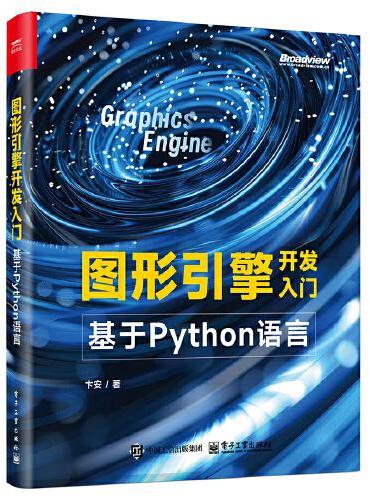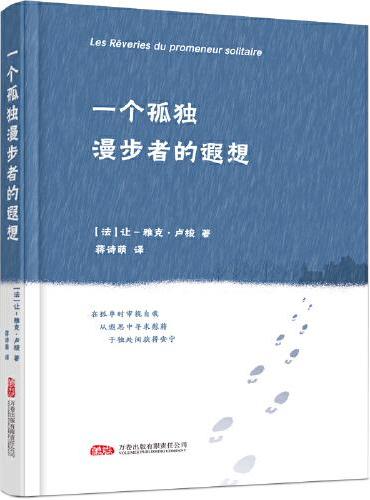新書推薦:

《
盐与唐帝国
》
售價:HK$
129.8

《
让花成花,让树成树
》
售價:HK$
74.8

《
悍妇女巫和她的故事(第一本以女巫为主角的故事集!)
》
售價:HK$
75.9

《
潮汕古建筑营造
》
售價:HK$
261.8

《
我所认识的大先生
》
售價:HK$
107.8

《
一念花开:让智慧温柔绽放
》
售價:HK$
57.2

《
图形引擎开发入门:基于Python语言
》
售價:HK$
151.8

《
一个孤独漫步者的遐想
》
售價:HK$
39.6
|
| 內容簡介: |
本书是作者继1978年版经典教材digital processing of speech signals之后的又一著作,本书除有简练精辟的基础知识介绍外,系统介绍了近30年来语音信号处理的新理论、新方法和在应用上的新进展。本书共14章,分四部分:第一部分介绍语音信号处理基础知识,主要包括数字信号处理基础、语音产生机理、人的听觉和听感知机理和声道中的声传播原理;第二部分介绍语音信号的时频域表示和分析;第三部分介绍语音参数估计算法;第四部分介绍语音信号处理的应用,主要包括语音编码、语音和音频信号的频域编码、语音合成、语音识别和自然语言理解。
本书可供高等院校通信、电子、信息、计算机等专业作为研究生和本科生教材,也可以供有关科研和工程技术人员参考,是一本既有系统的基础理论讲解、又有最新研究前沿介绍并密切结合应用发展的教材。
|
| 關於作者: |
|
Lawrence R.Rabiner,美国工程院和美国科学院院士,美国声学学会、IEEE、Bell实验室、AT&T会士,以及Eta Kappa Nu、Sigma Xi、Tau Beta Pi等荣誉学会会员。曾担任美国声学学会副主席、IEEE Trans.ASSP主编和IEEE Proceedings编委会成员。其主要研究方向包括:通信、控制与信号处理、数字信号处理、数字语音处理、多媒体通信、多模态处理等。Rabiner教授于2002年从AT&T退休,随后担任Rutgers大学和加州大学圣巴巴拉分校的教授,以及Rutgers大学先进信息处理中心副主任。
|
| 目錄:
|
preface
chapter 1 introduction to digital speechprocessing
1.1 the speechsignal
1.2 the speechstack
1.3 applicationsof digital speechprocessing
1.4 commentonthe references
1.5 summary
chapter 2 reviewof fundamentalsof digitalsignalprocessing
2.1 introduction
2.2 discrete-time signals and systems
2.3 transform representation of signals and systems
2.4 fundamentalsof digitalfilters
2.5 sampling
2.6 summary
problems
chapter 3 fundamentalsof human speechproduction
3.1 introduction
3.2 the processofspeechproduction
3.3 short-timefourierrepresentationofspeech
.3.4 acousticphonetics
3.5 distinctivefeaturesof thephonemesof american english
3.6 summary
problems
chapter 4 hearing,auditory models,and speechperception
4.1 introduction
4.2 the speechchain
4.3 anatomy andfunctionof theear
4.4 the perception of sound
4.5 auditory models
4.6 human speechperceptionexperiments
4.7 measurementofspeechqualityand intelligibility
4.8 summary
problems
chapter 5 sound propagationinthe humanvocaltract
5.1 the acoustictheoryofspeechproduction
5.2 losslesstube models
5.3 digital models forsampled speechsignals
5.4 summary
problems
chapter 6 time-domainmethods for speechprocessing
6.1 introduction
6.2 short-timeanalysisofspeech
6.3 short-timeenergyand short-timemagnitude
6.4 short-timezero-crossing rate
6.5 the short-timeautocorrelation function
6.6 the modied short-timeautocorrelation function
6.7 the short-timeaverage magnitude differencefunction
6.8 summary
problems
chapter 7 frequency-domainrepresentations
7.1 introduction
7.2 discrete-timefourieranalysis
7.3 short-timefourieranalysis
7.4 spectrographicdisplays
7.5 overlapaddition methodof synthesis
7.6 filter bank summationmethodof synthesis
7.7 time-decimatedfilter banks
7.8 two-channelfilter banks
7.9 implementationof thefbs method usingthe fft
7.10 olarevisited
7.11 modicationsof thestft
7.12 summary
problems
chapter 8 thecepstrumand homomorphic speechprocessing
8.1 introduction
8.2 homomorphicsystems forconvolution
8.3 homomorphicanalysisofthe speechmodel
8.4 computingthe short-timecepstrumand complexcepstrum of speech
8.5 homomorphicfilteringofnatural speech
8.6 cepstrumanalysisofall-pole models
8.7 cepstrumdistancemeasures
8.8 summary
problems
chapter 9 linear predictive analysisof speechsignals
9.1 introduction
9.2 basic principles of linear predictive analysis
9.3 computationofthe gainfor themodel
9.4 frequencydomaininterpretationsof linear predictiveanalysis
9.5 solutionofthe lpcequations
9.6 the prediction errorsignal
9.7 somepropertiesofthe lpcpolynomial az
9.8 relationoflinear predictive analysisto losslesstube models
9.9 alternative representationsof thelpparameters
9.10 summary 560problems
chapter 10 algorithms for estimating speechparameters
10.1 introduction
10.2 mediansmoothing and speechprocessing
10.3 speech-backgroundsilencediscrimination
10.4 abayesianapproach tovoicedunvoicedsilence detection
10.5 pitch period estimationpitch detection
10.6 formant estimation
10.7 summary 645problems
chapter 11 digitalcodingof speechsignals
11.1 introduction
11.2 sampling speechsignals
11.3 astatisticalmodelfor speech
11.4 instantaneous quantization
11.5 adaptivequantization
11.6 quantizingofspeechmodelparameters
11.7 generaltheoryof differentialquantization
11.8 delta modulation
11.9 differentialpcm dpcm
11.10 enhancements foradpcm coders
11.11 analysis-by-synthesis speechcoders
11.12 open-loop speechcoders
11.13 applicationsof speechcoders
11.14 summary 819problems
chapter 12 frequency-domaincodingof speechandaudio
12.1 introduction
12.2 historicalperspective
12.3 subband coding
12.4 adaptivetransform coding
12.5 aperception modelforaudiocoding
12.6 mpeg-1audiocoding standard
12.7 otheraudiocoding standards
12.8 summary 894problems
chapter 13 text-to-speechsynthesis methods
13.1 introduction
13.2 text analysis
13.3 evolutionof speechsynthesis methods
13.4 early speechsynthesis approaches
13.5 unitselection methods
13.6 tts future needs
13.7 visual tts
13.8summary 947problems
chapter 14 automatic speechrecognition andnatural language understanding
14.1 introduction
14.2 basic asrformulation
14.3 overall speechrecognition process
14.4 buildinga speechrecognition system
14.5 the decisionprocessesinasr
14.6 step3:the search problem
14.7 simpleasr system: isolateddigit recognition
14.8 performance evaluationof speechrecognizers
14.9 spokenlanguage understanding
14.10 dialog managementand spokenlanguage generation
14.11 user interfaces
14.12 multimodaluserinterfaces
14.13 summary 984problems
appendices
a speechandaudioprocessing demonstrations
b solutionoffrequency-domaindifferentialequations
bibliography
index
|
|









